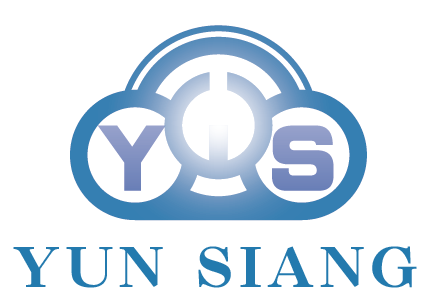家族企業,是情感與事業交織的獨特生態。如何讓家族的溫情,成為企業永續發展的動力,而非潛在的阻礙?「家族憲法與治理」正是為您的家族企業量身打造的基石,它不僅僅是一份文件,更是一套系統性的方法,旨在預防衝突、凝聚共識、傳承價值觀,最終成就企業的世代傳承 。
想像一下,當家族企業面臨代際交替、股權變動、經營理念分歧等關鍵時刻,如果沒有明確的規範,很容易陷入紛爭,甚至導致家族分裂、企業衰敗。而一份精心制定的家族憲法,就像一座燈塔,指引著家族成員在複雜的商業環境中,始終朝著共同的目標前進 。
本篇文章將深入探討家族憲法與治理的核心要素,從制定流程、內容框架,到實施策略、案例分析,為您提供全方位的指導。我們將著重於 :
- 衝突預防與解決: 學習如何識別潛在的衝突根源,並運用憲法中的機制有效化解。
- 代際傳承: 探索建立家族委員會和家族辦公室的策略,確保知識、經驗和財富的傳承。
- 股權結構: 分析不同股權結構的影響,並為您的企業提供優化建議。
- 價值觀傳承: 將家族價值觀融入憲法,並通過家族活動和教育傳承下去。
無論您是家族企業的所有者、管理者,還是家族成員,都能從中找到實用的建議和啟發。讓我們攜手為您的家族企業,打造一份能夠經受時間考驗的永續藍圖 。
專家提示: 制定家族憲法是一個持續的過程,需要家族成員的共同參與和定期審視。切記,最重要的不是憲法的內容本身,而是透過制定過程,促進家族成員之間的溝通與理解。
立即下載家族憲法制定指南,開啟您的企業永續傳承之旅!
為預防家族企業的潛在衝突,以下是制定家族憲法與治理規範的關鍵建議:
- 確立家族共同價值觀與願景,確保所有成員對長期目標有共識,以減少分歧 。
- 建立明確的決策框架和爭議解決機制,例如調解或仲裁,及時處理家族企業內部的潛在衝突 。
- 清晰定義家族成員在企業中的角色與責任,避免權力鬥爭和職責混淆 。
- 制定股權結構與繼承規劃,明確所有權和管理權的轉移規則,確保企業平穩過渡 。
- 將家族價值觀融入憲法,並通過家族活動和教育傳承下去,維護家族文化 。
- 定期審視與更新家族憲法,使其適應家族和企業的變化,確保其持續有效 。
- 確保所有家族成員參與憲法制定過程,促進溝通與理解,建立共識和歸屬感 。
- 在憲法中設立家族委員會或辦公室,負責監督憲法的執行和定期更新 。
- 重視家族情感因素和溝通,建立開放透明的對話管道,減少誤解和衝突 。
Table of Contents
Toggle家族憲法:家族企業衝突預防與和諧共榮的藍圖
在衝突預防中,家庭憲章(Family Constitution)是一個重要的文件,旨在透過確立共同的價值觀、目標和規則,來預防和管理家庭成員之間,特別是涉及家族企業時可能產生的衝突。
1. 定義家庭價值觀和願景:
家庭憲章闡述了家庭的核心價值觀、使命和願景。 這有助於確保所有家庭成員對家庭的長期目標和宗旨有一致的理解,從而減少因目標不一致而產生的分歧。
2. 確立決策框架:
該文件為家庭如何做出重要決策提供了明確的指導方針和流程。 這包括誰在家庭事務中有發言權,決策過程如何進行,以及如何解決爭議。 透過建立一個結構化的決策機制,可以防止潛在的衝突,並確保所有家庭成員都被納入考量並獲得資訊。
3. 明確角色和責任:
家庭憲章定義了家庭成員在家族企業或其他家庭事務中的角色和責任。 這有助於避免權力鬥爭和對職責的混淆,確保每個人都清楚自己的職責範圍。
4. 規範溝通和行為:
該文件可以包含關於家庭成員之間溝通方式以及行為準則的規定。 這有助於促進開放、誠實的對話,減少誤解,並建立信任。
5. 建立衝突解決機制:
家庭憲章不僅旨在預防衝突,還提供了處理潛在衝突的程序。 這可能包括調解、協商或仲裁等正式機制,旨在以建設性且尊重的方式解決爭端,防止衝突升級。
6. 促進繼承規劃:
在家族企業中,家庭憲章可以為所有權和管理責任的傳承製定清晰的指導方針。 這有助於確保領導層的順利過渡,並最大限度地減少領導變更期間的不確定性和中斷。
7. 建立文件化的協議:
家庭憲章是一個書面文件,它記錄了家庭成員之間就如何共同生活和做決策達成的一致意見。 雖然它通常不具有法律約束力,但它為家庭關係和商業事務提供了一個重要的指導框架。
8. 過程本身的重要性:
制定家庭憲章的過程,即討論、辯論和最終制定文件的過程,本身就具有重要的價值。 這個過程可以讓家庭成員更深入地瞭解彼此,促進家庭凝聚力,並為未來的世代奠定基礎。
從願景到落地:家族憲法的系統化制定與關鍵內容解析
Family constitutions, also known as family charters or family protocols, are formal documents that outline a family’s values, vision, and mission, serving as a roadmap for current and future generations. They establish a framework for governance and decision-making, guiding important decisions related to family governance, wealth management, and business operations. The process of creating a family constitution is often as valuable as the document itself, fostering alignment and shared understanding among family members.
Key Components of a Family Constitution:
- Vision, Mission, and Values: This section articulates the family’s overarching purpose, core beliefs, guiding principles, and long-term objectives. It sets the tone for the entire document.
- Governance Structure: The constitution should outline the family’s governance framework, including the roles and responsibilities of family councils, boards, committees, and management. It also details decision-making processes and voting procedures.
- Family Definition: Clearly define who is considered part of the family for the purposes of the constitution, including spouses, adopted children, and stepchildren.
- Succession Planning: This includes plans for the transition of leadership roles and ownership from one generation to the next, outlining eligibility criteria and selection processes.
- Employment Policies: Rules governing family members’ employment within the business, including compensation, roles, and management policies.
- Conflict Resolution: Procedures for addressing and resolving disagreements among family members to ensure fairness and maintain harmony.
- Education and Development: Emphasis on the importance of ongoing education for family members, both for personal development and for the effective stewardship of the family business.
- Philanthropy and Social Responsibility: Codification of the family’s views on giving back to the community and their impact.
- Asset Management and Inheritance Policies: Policies on wealth generation, wealth protection, joint asset ownership, pre-nuptial agreements, and trust arrangements.
How to Systematically Create a Family Constitution:
- Family Seminar: Begin with an educational session to inform family members about common issues faced by family businesses and various models for addressing them. This stage also involves assessing the family’s commitment to the process.
- Individual Meetings: Conduct confidential meetings with all family and key non-family members to gather their perspectives and concerns. This helps identify underlying issues and drives the next steps.
- Foundation Work: Establish a clear sense of shared goals and direction for the family before designing governance arrangements.
- Drafting the Constitution: A task force, potentially including external advisors like legal experts, drafts the constitution. This draft, containing various options and discussion notes, is shared with the family for review and feedback in advance of a family retreat.
- Review and Revision: Involve the entire family in reviewing and revising the draft. Anonymous voting can be helpful for honest feedback.
- Implementation: Once adopted, focus on implementing the constitution through workshops or meetings to explain new policies and procedures.
- Regular Review and Updates: A family constitution is a living document that should evolve as the family and business change. A Family Council can be formed to regularly update and enforce the constitution.
Creating a family constitution requires open communication, discipline, and a collaborative approach to ensure it reflects the collective values and goals of the family, fostering a sense of ownership and commitment. It’s a tool that can help prevent misunderstandings, reduce conflict, improve succession planning, and ensure long-term success and harmony.創建家族憲章是一個系統化的過程,旨在為家庭(特別是家族企業)建立一個治理框架、明確價值觀,並促進長期和諧與成功。這份文件不僅僅是一個法律文件,更是一個家庭共同願景和承諾的體現。
創建家族憲章的關鍵組成部分:
- 願景、使命與價值觀: 這是家族憲章的核心,闡述家庭的總體目標、核心信念、指導原則以及長期願景。它為文件的其他部分定下基調。
- 治理結構: 明確家庭的治理框架,包括家族委員會、董事會、管理團隊及廣大家庭成員的角色和職責。同時,也應包含決策過程和投票規則。
- 家庭成員定義: 清楚界定哪些人被視為家庭成員,例如配偶、收養子女或繼子女,以便於後續的規劃和決策。
- 繼承規劃: 制定領導職位和所有權從一代傳遞到下一代的計劃,包括資格標準和遴選流程。
- 僱傭政策: 規範家庭成員在家族企業中工作的規則,包括薪酬、職位和管理政策。
- 衝突解決機制: 建立處理和解決家庭成員之間爭議的程序,以確保公平並維持和諧。
- 教育與發展: 強調持續教育對家庭成員的重要性,無論是個人發展還是有效管理家族事業。
- 慈善與社會責任: 記錄家庭對回饋社會和其影響力的觀點。
- 資產管理與繼承政策: 關於財富創造、財富保護、共同資產所有權、婚前協議和信託安排的政策。
系統化創建家族憲章的步驟:
- 家族研討會: 舉辦首次會議,向所有家庭成員介紹家族企業面臨的常見問題以及可行的解決方案模型。此階段也用於評估家庭對整個過程的承諾。
- 個別訪談: 與所有家庭成員及關鍵的非家庭成員進行保密訪談,收集他們的觀點和顧慮。這有助於識別潛在問題,並推動後續流程。
- 基礎工作: 在設計治理安排之前,清晰地確立家庭的共同目標和方向。
- 起草憲章: 成立一個任務小組(可包含外部法律專家等顧問),起草憲章草案。草案應包含多種選項和討論筆記,並提前分發給家庭成員審閱,為家族退思會做準備。
- 審閱與修訂: 邀請所有家庭成員參與審閱和修訂草案。可考慮使用匿名投票方式收集真實回饋。
- 實施: 憲章一旦通過,應透過工作坊或會議向所有成員解釋新的政策和程序,確保其有效執行。
- 定期審查與更新: 家族憲章是一個「活的文件」,應隨家庭和企業的變化而演變。可以成立家族委員會負責定期更新和執行憲章。
創建家族憲章是一個需要開放溝通、紀律和協作的過程,以確保文件能反映家庭的集體價值觀和目標,從而培養成員的歸屬感和承諾感。這份文件能夠幫助預防誤解、減少衝突、改善繼承規劃,並確保家庭長期的成功與和諧。
超越傳承:家族憲法在股權優化、價值觀傳承與國際治理中的實踐
A family constitution is a crucial document that outlines a family’s values, principles, objectives, and governance structures, particularly for international families with businesses or significant wealth. It serves as a roadmap for decision-making, conflict resolution, and succession planning, ensuring the family’s unity and prosperity across generations and borders.
Here’s a detailed explanation of its importance for international families:
1. Governance Framework:
Clear Roles and Responsibilities: A family constitution establishes a clear governance framework that defines the roles, positions, and powers of family members within the business or in managing shared assets. This is especially important in international settings where family members may be spread across different countries and legal systems.
Decision-Making Processes: It outlines how decisions will be made, ensuring consistency and fairness, regardless of geographical location. This helps to avoid ambiguities and potential conflicts arising from different cultural approaches to decision-making.
Family Council: It often establishes a family council, akin to a board of directors for the family, fostering accountability and providing strategic direction for the family business.
2. Conflict Prevention and Resolution:
Proactive Conflict Management: Family conflicts can arise from differing financial expectations, decision-making styles, or wealth distribution. A family constitution sets clear guidelines and procedures for addressing potential disputes before they escalate.
Dispute Resolution Mechanisms: It can include provisions for alternative dispute resolution, ensuring that disagreements are handled efficiently and effectively, even across international borders.
3. Succession Planning:
Smooth Transitions: It provides guidelines for leadership and ownership transitions, ensuring a smooth succession of the family business or other assets from one generation to the next. This is critical for international families where succession can be complicated by differing laws and customs.
Preventing Key Person Risk: Especially highlighted by events like the COVID-19 pandemic, family constitutions help address the risk associated with over-reliance on one or a few individuals, by establishing structures for continuity.
4. Preservation of Values and Legacy:
Maintaining Family Culture: It helps define and preserve the family’s unique culture, values, and traditions, ensuring they are passed down to future generations.
Legacy Creation: A family constitution allows families to create a lasting legacy that can span generations, guiding philanthropic activities and financial decisions in line with the family’s long-term vision.
5. Wealth Management and Financial Stewardship:
Structured Approach: It provides a framework for managing investments, estate planning, and charitable activities, ensuring responsible financial stewardship.
Clarity on Financial Expectations: It can help clarify financial expectations among family members, reducing misunderstandings and promoting accountability.
6. Adaptability and Evolution:
Living Document: A well-crafted family constitution is not rigid but is designed to evolve. It should be reviewed and adapted by each generation to address changing circumstances and societal shifts. This adaptability is crucial for international families navigating a dynamic global landscape.
In essence, a family constitution acts as a foundational document that brings structure, harmony, and clarity to complex family dynamics, especially when dealing with international operations, diverse cultures, and multi-generational wealth. The process of creating it, involving discussion and debate among family members, often brings the family closer and strengthens their bonds.
| Area | Description |
|---|---|
| Governance Framework | Establishes clear roles, responsibilities, and decision-making processes within the family and business, especially important in international settings with diverse legal systems and cultural approaches. Often includes a family council for accountability and strategic direction. |
| Conflict Prevention and Resolution | Sets guidelines and procedures for addressing potential disputes related to financial expectations, decision-making styles, or wealth distribution. Includes mechanisms for alternative dispute resolution to handle disagreements efficiently across international borders . |
| Succession Planning | Provides guidelines for leadership and ownership transitions to ensure a smooth succession of the family business or assets . Addresses risks associated with over-reliance on key individuals by establishing structures for continuity. |
| Preservation of Values and Legacy | Defines and preserves the family&x27;s unique culture, values, and traditions to pass down to future generations . Guides philanthropic activities and financial decisions in line with the family&x27;s long-term vision, creating a lasting legacy. |
| Wealth Management and Financial Stewardship | Provides a framework for managing investments, estate planning, and charitable activities to ensure responsible financial stewardship . Clarifies financial expectations among family members, reducing misunderstandings and promoting accountability. |
| Adaptability and Evolution | Designed to evolve and be reviewed/adapted by each generation to address changing circumstances and societal shifts . Crucial for international families navigating a dynamic global landscape. |

家族憲法與治理:制定規範以處理未來潛在的家族與經營衝突. Photos provided by unsplash
解鎖家族企業新價值:家族憲法實操中的常見誤區與最佳實踐
Common mistakes in implementing a family constitution often stem from a failure to fully involve all family members in the creation process, a lack of clear communication, and an unwillingness to enforce the established rules. These issues can undermine the document’s effectiveness and lead to future conflict.
Here are some common mistakes and how to address them:
-
Insufficient Family Involvement: A family constitution drafted by only a few individuals or external consultants, without significant input from all family members, is likely to face resistance. This lack of inclusivity can lead to feelings of disengagement and a lack of ownership among those not involved in the drafting process. To avoid this, ensure that all primary family stakeholders participate in the drafting process, giving everyone a voice. The process of creating the constitution can be more important than the final document itself, as it fosters collaboration and understanding.
-
Fear of Change and Emotional Attachments: Family businesses often have deep emotional ties, especially for founders whose identity is intertwined with the business. This can lead to a fear of change and a reluctance to formalize roles or shift control. It’s crucial to approach these concerns with empathy and clearly articulate the long-term benefits of the constitution, emphasizing how it enhances clarity and reduces conflict, rather than diminishing control. Highlighting the founder’s legacy and values within the document can also help ease these fears.
-
Lack of Consensus: Achieving 100% agreement on a family constitution can be challenging. If consensus is not reached during the drafting phase, it can create issues during implementation. Engaging all family members in the drafting process is key to building consensus, as it ensures everyone feels heard.
-
Unwillingness to Enforce the Constitution: Even a well-drafted constitution can fail if its rules are not consistently and fairly enforced. A founder’s reluctance to uphold the agreed-upon rules can undermine the document’s credibility from the outset. Consistent and fair application of the constitution’s provisions to all family members is essential for its success.
-
Ignoring Family Dynamics and Communication: Neglecting the emotional factors and unique dynamics within a family can lead to conflict and dissatisfaction. A family constitution is not just a business document; it’s a personal one. Therefore, fostering open communication, transparency, and understanding is vital. This involves having candid conversations about individual aspirations, potential disagreements, and how to manage conflict respectfully.
-
Treating it as a One-Time Event: A family constitution should be a living document that evolves with the family and the business. Failure to regularly review and update it can make it irrelevant over time. Scheduling regular reviews to assess the effectiveness of existing policies and make necessary updates ensures the constitution remains a relevant guide.
-
Over-reliance on External Consultants: While consultants can provide valuable guidance, the constitution must be “FOR the Family, BY the Family”. If the document is largely created by consultants without substantial family involvement, it may not serve its intended purpose.
By being aware of these common pitfalls and actively working to address them through inclusive participation, open communication, and consistent enforcement, families can significantly increase the chances of successfully implementing their family constitution and fostering long-term harmony and prosperity.
家族憲法與治理:制定規範以處理未來潛在的家族與經營衝突結論
經過以上的深入探討,相信您對家族憲法與治理有了更全面的理解。它不僅僅是一份冰冷的法律文件,更是家族成員共同的承諾,是維繫家族情感與企業發展的橋樑。透過家族憲法與治理:制定規範以處理未來潛在的家族與經營衝突,我們得以事先規劃、有效預防,讓家族企業在面對變革與挑戰時,能更加穩健地前行。
家族企業的永續經營,仰賴的不僅是精明的商業策略,更是家族成員間的信任、尊重與合作。一份完善的家族憲法,能夠幫助家族成員在共同的框架下,實現各自的價值,並為企業的發展貢獻力量。它如同指南針,引領家族企業在複雜的商業環境中,始終朝著共同的目標前進。
制定家族憲法是一個持續的過程,需要家族成員的共同參與和定期審視。最重要的是,透過制定過程,促進家族成員之間的溝通與理解,建立共同的價值觀和願景。唯有如此,才能真正讓家族憲法與治理:制定規範以處理未來潛在的家族與經營衝突,成為家族企業世代傳承的基石,成就家族企業的永續輝煌。
家族憲法與治理:制定規範以處理未來潛在的家族與經營衝突 常見問題快速FAQ
什麼是家族憲法?
家族憲法是一份正式文件,闡述家族的價值觀、願景和使命,為當代及後代子孫提供藍圖,作為治理和決策的依據,促進家族的團結與繁榮。
家族憲法包含哪些關鍵要素?
家族憲法通常包含願景、使命、價值觀、治理結構、家庭成員定義、繼承規劃、僱傭政策、衝突解決機制、教育與發展、慈善與社會責任、資產管理與繼承政策等關鍵要素。
制定家族憲法的步驟有哪些?
制定家族憲法的步驟包括家族研討會、個別訪談、基礎工作、起草憲章、審閱與修訂、實施、定期審查與更新等環節,確保憲章能反映家庭的集體價值觀和目標。
家族憲法在國際家族企業中的重要性?
在國際家族企業中,家族憲法有助於建立清晰的治理框架,預防和解決跨國衝突,規劃順利的繼承過渡,維護家族文化和價值觀,並促進負責任的財富管理。
實施家族憲法常見的錯誤有哪些?
實施家族憲法的常見錯誤包括家族參與不足、害怕改變、缺乏共識、不願執行憲法、忽略家庭動態和溝通、將其視為一次性事件以及過度依賴外部顧問等。
如何有效預防家族企業的衝突?
透過定義家庭價值觀、確立決策框架、明確角色和責任、規範溝通和行為、建立衝突解決機制、促進繼承規劃等,家庭憲章能有效預防和管理家族企業的潛在衝突。
家族憲法如何促進家族企業的代際傳承?
家族憲法為領導和所有權的過渡制定清晰的指導方針,確保家族企業或資產從一代順利傳承到下一代,最大限度地減少領導變更期間的不確定性和中斷。
家族憲法是個一成不變的文件嗎?
不是的,家族憲法應是一個「活的文件」,隨著家族和企業的變化而演變,需要定期審查和更新,以確保其持續相關性和有效性。



